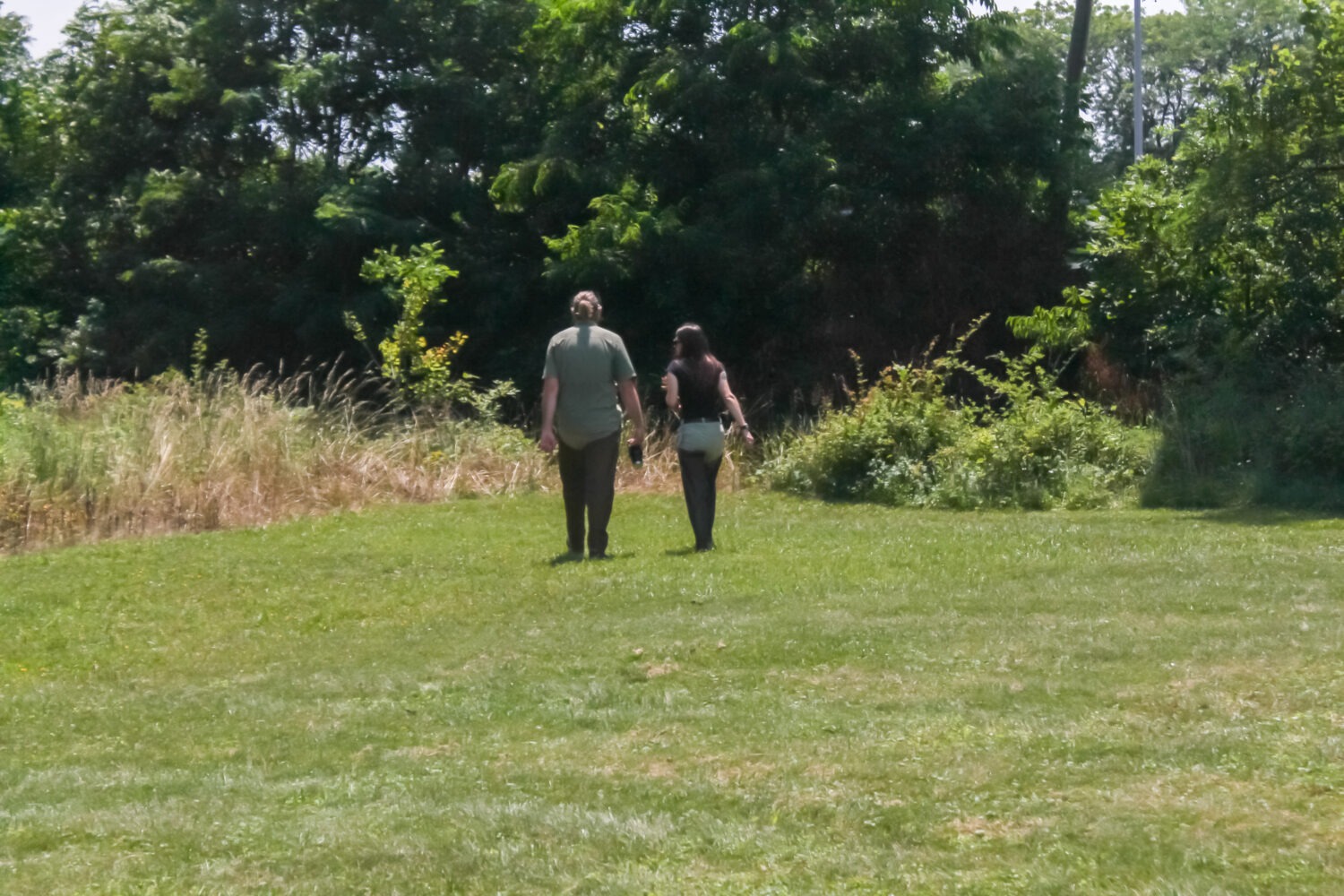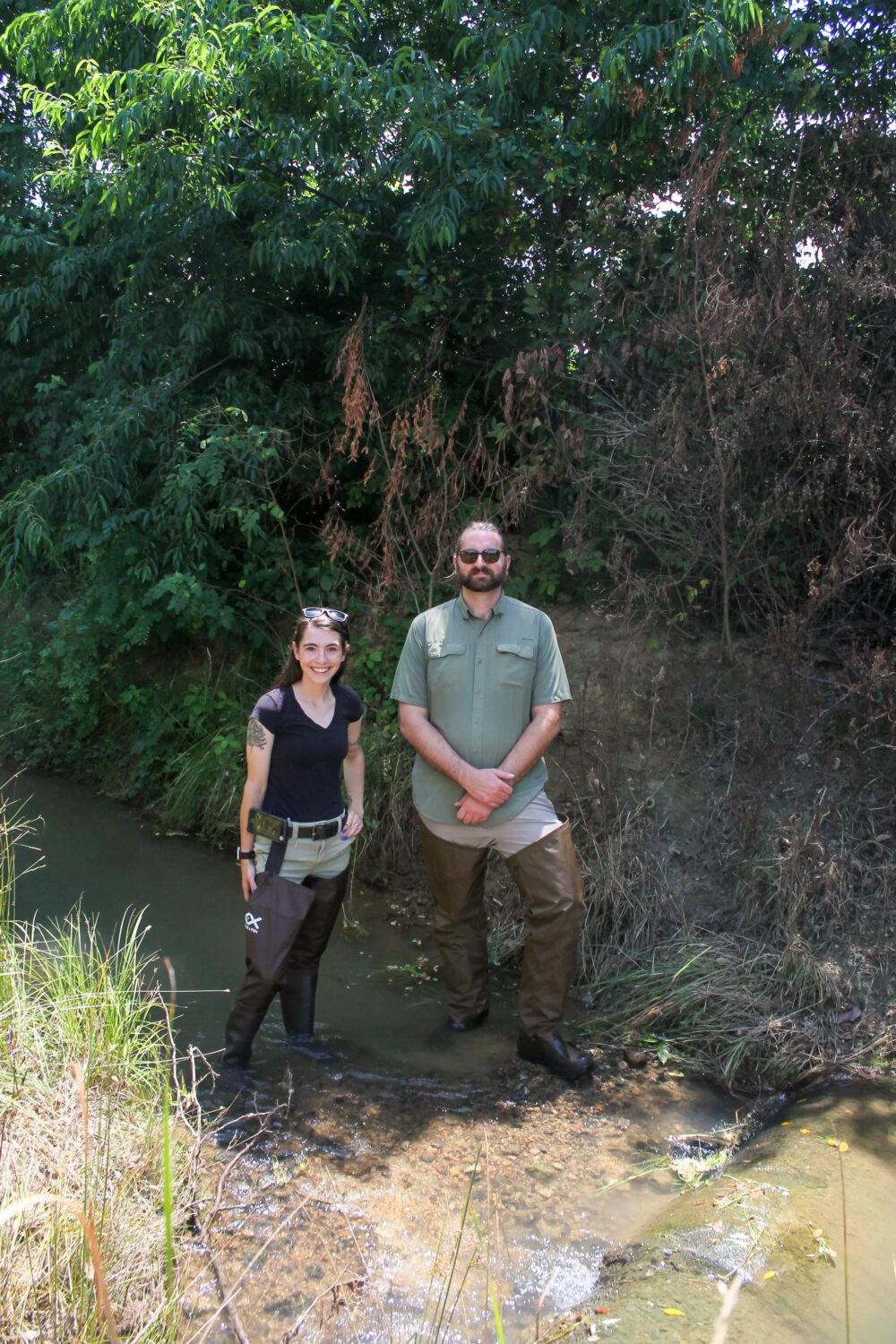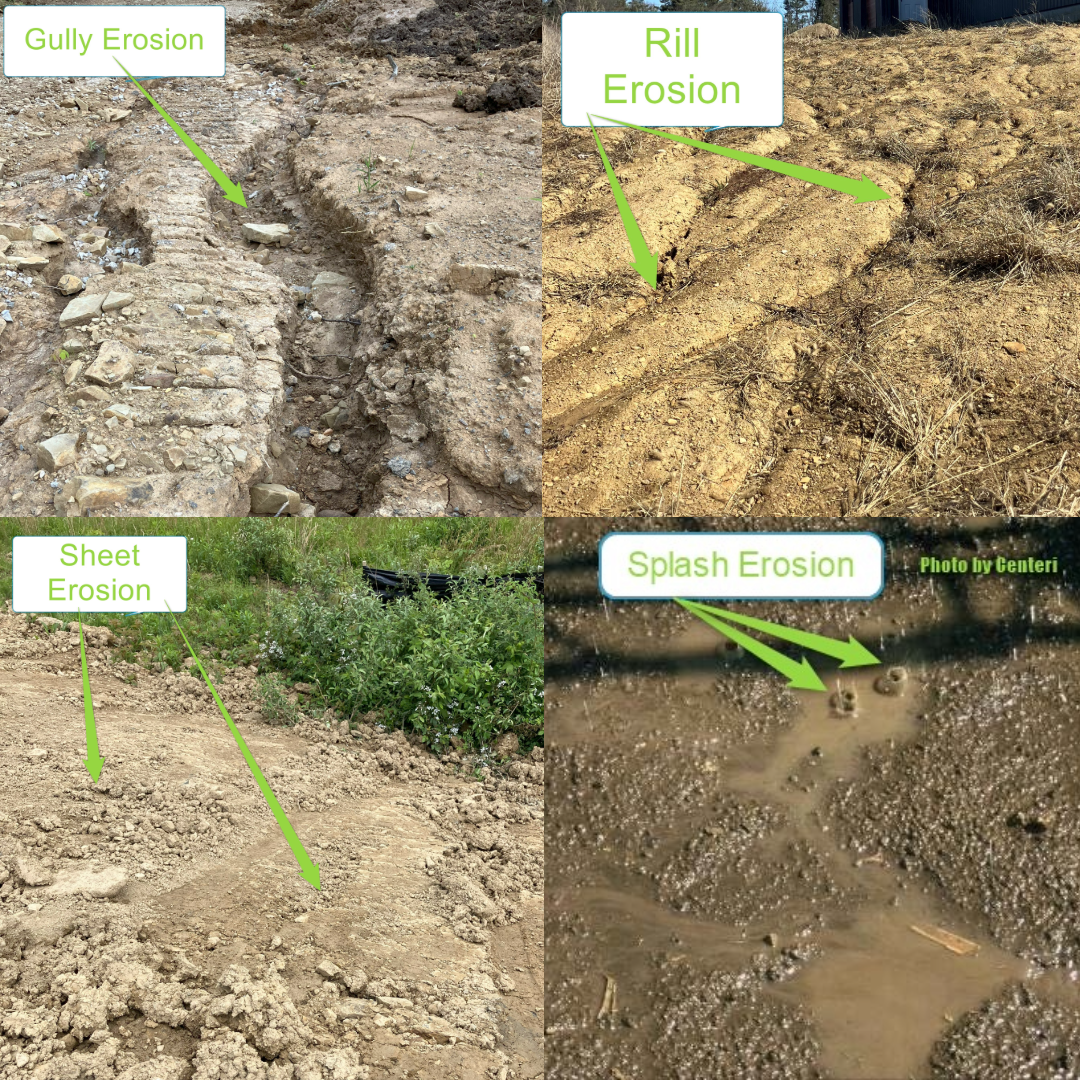In the second quarter Sam and I continued our work with the Health Department to inspect outfalls that previously had illicit discharges. We re-tested several to confirm elimination and are looking forward to continuing this partnership as we work through a few more outfalls in the coming months. We also attended the MS4 bootcamp at the 2025 Ohio Stormwater Conference where we got a helpful refresher on the six minimum control measures and what to expect during Ohio EPA audits. We’re better equipped literally too! Sam and I both have waders now and we’re excited to stay dry during our final six dry weather screenings this year.


From Splash to Gully: The Many Ways Soil Moves
Keeping dirt in its place is the MS4 theme for 2025 and this spring gave us plenty of reminders why that message matters. During stormwater inspections, Sam and I noticed a significant amount of erosion. So much so that we spent a good part of the spring fielding phone calls about seeding, stabilization and erosion control methods. Rainfall can cause soil to move in several different ways. Understanding the different types of erosion can help us take the proper steps to protect our landscapes. Below are the four types of erosion we commonly observe: Splash, sheet, rill and gully.
- Splash: Soil displaced by the impact of a falling raindrop. According to National Geographic the impact of a falling raindrop can scatter soil particles as far as 2 feet.
- Sheet: Displacement of soil in thin layers by the forces of rain and stream flow. Erosion caused by runoff.
- Rill: Displacement of soil by water running through little streamlets or headcuts.
- Gully: Displacement of soil along drainage lines (large channels) by surface water runoff. Usually begin as rills.
All four types of erosion can quickly get out of hand if sites aren’t stabilized in a timely manner. The best way to prevent erosion is to seed and mulch bare soil as soon as possible. Early stabilization not only keeps you in compliance with the Stormwater and Sediment Control Regulations of Richland County but also protects our waterways. Thank you for doing your part to keep dirt in its place!

